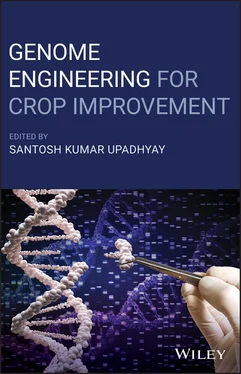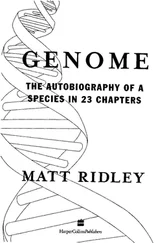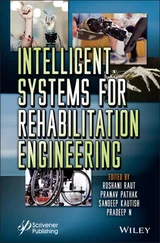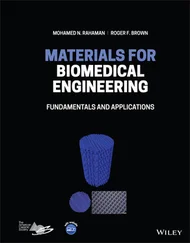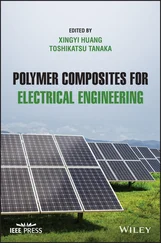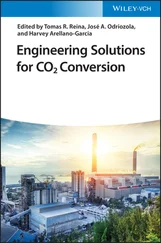56 Komor, A.C., Kim, Y.B., Packer, M.S. et al. (2016). Programmable editing of a target base in genomic DNA without doubles tranded DNA cleavage. Nature 533: 420.
57 Kulkarni, K.P., Patil, G., Valliyodan, B. et al. (2018). Comparative genome analysis to identify SNPs associated with high oleic acid and elevated protein content in soybean. Genome 61: 217–222.
58 Lau, W.C., Rafii, M.Y., Ismail, M.R. et al. (2015). Review of functional markers for improving cooking, eating, and the nutritional qualities of rice. Frontiers in Plant Science 6: 832.
59 Li, J., Xiao, J., Grandillo, S. et al. (2004). QTL detection for rice grain quality traits using an interspecific backcross population derived from cultivated Asian (Oryza sativa L.) and African (Oryzaglaberrima S.) rice. Genome 47: 697–704.
60 Li, S., Li, J., Wang, N. et al. (2007). Inheritance and expression of copies of transgenes 1Dx5 and 1Ax1 in elite wheat (Triticumaestivum L.) varieties transferred from transgenic wheat through conventional crossing. ActaBiochimicaetBiophysicaSinica 39: 377–383.
61 Li, D.D., Ruan, X.M., Zhang, J. et al. (2013). Cotton plasma membrane intrinsic protein 2s (PIP2s) selectively interact to regulate their water channel activities and are required for fiber development. New Phytology 199: 695–707.
62 Li, Z., Liu, Z.B., Xing, A. et al. (2015). Cas9‐guide RNA directed genome editing in soybean. Plant Physiology 169: 960–970.
63 Li, Q., Li, L., Liu, Y. et al. (2017). Influence of TaGW2‐6A on seed development in wheat by negatively regulating gibberellin synthesis. Plant Science 263: 226–235.
64 Li, J., Zhang, H., Si, X. et al. (2017). Generation of thermosensitive male‐sterile maize by targeted knockout of the ZmTMS5 gene. Journal of Genetics and Genomics 44: 465.
65 Liang, Z., Zhang, K., Chen, K., and Gao, C. (2014). Targeted mutagenesis in Zea mays using TALENs and the CRISPR/Cas system. Journal of Genetics and Genomics 41: 63–68.
66 Liang, Z., Chen, K., Li, T. et al. (2017). Efficient DNA‐free genome editing of bread wheat using CRISPR/Cas9 ribonucleoprotein complexes. Nature Communications 8: 1–5.
67 Liu, G., Wu, Y., Xu, M. et al. (2016). Virus‐induced gene silencing identifies an important role of the TaRSR1 transcription factor in starch synthesis in bread wheat. International Journal of Molecular Sciences 17: 1557.
68 Liu, J., Wu, X., Yao, X. et al. (2018). Mutations in the DNA demethylase OsROS1 result in a thickened aleurone and improved nutritional value in rice grains. Proceedings of the National Academy of Sciences 115: 11327–11332.
69 Lloyd, A.H., Wang, D., and Timmis, J.N. (2012). Single molecule PCR reveals similar patterns of non‐homologous DSB repair in tobacco and Arabidopsis. PLoSOne 7 (2): e32255.
70 Loguercio, L.L., Zhang, J.Q., and Wilkins, T.A. (1999). Differential regulation of six novel MYB‐domain genes defines two distinct expression patterns in allotetraploid cotton (Gossypium hirsutum L.). Molecular Genomics and Genetics 261: 660–671.
71 Lou, J., Chen, L., Yue, G. et al. (2009). QTL mapping of grain quality traits in rice. Journal of Cereal Science 50: 145–151.
72 Ma, X., Zhang, Q., Zhu, Q. et al. (2015). A robust CRISPR/Cas9 system for convenient, high‐efficiency multiplex genome editing in monocot and dicot plants. Molecular Plant 8: 1274–1284.
73 Machado, A., Wu, Y., Yang, Y. et al. (2009). The MYB transcription factor GhMYB25 regulates early fibre and trichome development. Plant Journal 59: 52–62.
74 Manik, N. and Ravikesavan, R. (2009). Emerging trends in enhancement of cotton fiber productivity and quality using functional genomics tools. Biotechnology and Molecular Biology Reviews 4: 11–28.
75 Meenu, M. and Xu, B. (2018). A critical review on anti‐diabetic and anti‐obesity effects of dietary resistant starch. Critical Reviews in Food Science and Nutrition 59 (18): 3019–3031.
76 Montague, T.G., Cruz, J.M., Gagnon, J.A. et al. (2014). CHOPCHOP: a CRISPR/Cas9 and TALEN web tool for genome editing. Nucleic Acids Research 42: 401–407.
77 Morgante, M. (2006). Plant genome organisation and diversity: the year of the junk. Current Opinion in Biotechnology 17: 168–173.
78 Nalam, V.J., Alam, S., Keereetaweep, J. et al. (2015). Facilitation of Fusariumgraminearum infection by 9‐lipoxygenases in Arabidopsis and wheat. Molecular Plant‐Microbe Interactions 28: 1142–1152.
79 Nester, E.W. (2014). Agrobacterium: nature's genetic engineer. Frontiers in Plant Science 5: 730.
80 Nordin, Y. and Lantbruksakademien, K.S.O. (2008). Golden Rice and Other Biofortified Food Crops for Developing Countries: Challenges and Potential. Rome, Italy: FAO.
81 Pacher, M. and Puchta, H. (2017). From classical mutagenesis to nuclease based breeding directing natural DNA repair for a natural end‐product. Plant Journal 90: 819–833.
82 Payne, P.I. (1987). Genetics of wheat storage proteins and the effect of allelic variation on bread‐making quality. Annual Review of Plant Physiology and Plant Molecular Biology 38: 141–153.
83 Pegoraro, C., da Mertz, L.M., Maia, L.C. et al. (2011). Importance of heat shock proteins in maize. Journal of Crop Science and Biotechnology 14: 85–95.
84 Peng, B., Kong, H., Li, Y. et al. (2014). OsAAP6 functions as an important regulator of grain protein content and nutritional quality in rice. Nature Communications 5: 4847.
85 Pham, A.T., Lee, J.D., Shannon, J.G., and Bilyeu, K.D. (2011). A novel FAD2‐1 a allele in a soybean plant introduction offers an alternate means to produce soybean seed oil with 85% oleic acid content. Theoretical and Applied Genetics 123: 793–802.
86 Pliatsika, V. and Rigoutsos, I. (2015). Off‐spotter: very fast and exhaustive enumeration of genomic lookalikes for designing CRISPR/Cas guide RNAs. Biology Direct 10: 4.
87 Pourcel, C., Salvignol, G., and Vergnaud, G. (2005). CRISPR elements in Yersinia pestis acquire new repeats by preferential uptake of bacteriophage DNA, and provide additional tools for evolutionary studies. Microbiology 151: 653–663.
88 Prykhozhij, S.V., Rajan, V., Gaston, D., and Berman, J.N. (2015). CRISPR multitargeter: a web tool to find common and unique CRISPR single guide RNA targets in a set of similar sequences. PLoS One 10: e0119372.
89 Puchta, H. (2005). The repair of double‐strand breaks in plants: mechanisms and consequences for genome evolution. Journal of Experimental Botany 56: 1–14.
90 Qi, W., Zhu, T., Tian, Z. et al. (2016). High‐efficiency CRISPR/Cas9 multiplex gene editing using the glycine tRNA processing system‐based strategy in maize. BMC Biotechnology 16: 58.
91 Qin, Y.M. and Zhu, Y.X. (2011). How cotton fibers elongate: a tale of linear cell growth mode. Current Opinion in Plant Biology 14: 106–111.
92 Quétier, F. (2016). The CRISPR‐Cas9 technology: closer to the ultimate toolkit for targeted genome editing. Plant Science 242: 65–76.
93 Regina, A., Bird, A., Topping, D. et al. (2006). High‐amylose wheat generated by RNA interference improves indices of large‐bowel health in rats. Proceedings of the National Academy of Sciences 103: 3546–3551.
94 Ruan, Y. (2007). Rapid cell expansion and cellulose synthesis regulated by plasmodesmata and sugar: insights from the single‐celled cotton fibre. Functional Plant Biology 34: 1–10.
95 Sabouri, A., Rabiei, B., Toorchi, M. et al. (2012). Mapping quantitative trait loci (QTL) associated with cooking quality in rice (Oryza sativa. L). Australian Journal of Crop Science 6: 808.
96 Sánchez‐León, S., Gil‐Humanes, J., Ozuna, C.V. et al. (2018). Low‐gluten, nontransgenic wheat engineered with CRISPR/Cas9. Plant Biotechnology Journal 16: 902–910.
97 Schaart, J.G., Van De Wiel, C.C.M., Lotz, L.A.P., and Smulders, M.J.M. (2016). Opportunities for products of new plant breeding techniques. Trends in Plant Science 21: 438–449.
Читать дальше
